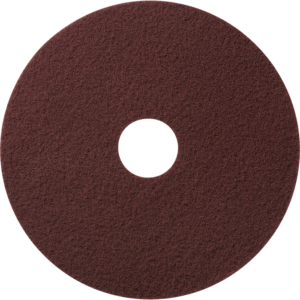Saving Labor on Floor Care Processes starts with eliminating stripping and burnishing
As labor shortages continue to impact cleaning operations, reducing the time allocated for floor maintenance should be considered. However, floor appearance is still a driver on public perceptions of facility cleanliness, so careful planning is required.
be considered. However, floor appearance is still a driver on public perceptions of facility cleanliness, so careful planning is required.
Burnishing finishes to repair and restore shine has been a well accepted maintenance process for decades when a high shine is desired. But the process requires special equipment and is a distinctly separate maintenance process.
Stripping finished floors down to the bare tile with chemical strippers is another process that has been around since the invention of metal crosslinked floor finishes. In this case, the finishes have a lock and key chemistry that makes them very durable under normal conditions, but when exposed to a specially formulated stripper, the key is unlocked and the finish is easily emulsified. While making the removal process easier, chemical stripping is still hard work, usually requiring higher skill levels, and poses the highest safety risks to employees.
The problem with Burnishing
Floor finishes designed for high speed buffing (burnishing) can be more prone to scuffing, black marking, and dirt embedment. Why you ask? Because the process of burnishing is actually an abrasive-polishing process. To get the best burnish response, the tradeoff is often reduced durability properties of the finish .
New Clean & Polish Technology combines floor pads with chemistry to eliminate burnishing
Floor Pads: Several large pad manufacturers including 3M and Americo have developed pads for use on scrubbers for daily cleaning that also gradually increase the gloss of a finish.
Chemistry: Using a special wax grafted detergent when daily cleaning with the above pads results in a gradual increase in the gloss of the finish. The pads and chemistry smooth out micro scratches to enhance shine.
Equipment: Automatic scrubbers with rotary agitation are needed.
Is Clean & Polish the same as burnishing?
Make no mistake, for a wet look shine, high or ultra high speed burnishing is the way to achieve the highest gloss, but at what cost? There are plenty of facilities that demand the wet look gloss and are willing to pay for it, in those cases burnishing is still the answer.
But, what about other facilities that appreciate a clean and shiny floor. The “Wet Look” is not a requirement here. Think schools, retail, office buildings, healthcare and more. The Clean and Polish process combines two processes into one. If done regularly, it is effective and gradually increases shine. Expect to notice a difference after 4-8 scrubs.
Optimizing Finish Properties for Self Polishing
We use the phrase “Self Polishing” finish to describe a floor coating that has properties that are optimized for the Clean & Polish process.
The Self Polishing floor coating is typically more resistant to scuffing, marking, and scratching than its cousins that are formulated for high speed burnishing.
Note that these finishes are not harmed by burnishing and can be chemically stripped like any other finish.
NEXT: How to Eliminate Chemical Stripping
Stripping floors is another labor intensive process. The reason floors need to be stripped is because they become discolored (yellowed) over time.
Why do floors require stripping? One might think the polymers in the finish naturally yellow under lights in a building. This is untrue, as most modern finishes do not discolor over time with exposure to interior lighting. The real reason is the top layers of the finish are exposed to dirt. As this dirt remains on a floor, it can become embedded into the 1-3 top coats of finish creating a yellowed appearance. This is sometimes referred to as “the dirty-shiny look”. If these yellowed, dirt embedded coats are not removed prior to recoating, they are effectively sealed in with additional coats.
Eliminate Yellowing = Eliminate Stripping: If you can eliminate the yellowing effect by first removing the yellowed coats of finish, then re-coating the floor maintains its true color and stripping becomes unnecessary. The process again involves specific floor pads, chemistry, and equipment.
New Intensive recoat prep combines floor pads, equipment and chemistry to eliminate stripping
Surface Preparation Pads: These pads, usually burgundy or maroon in color are thin pads designed to abrasively clean and remove coats of finish.
Chemistry: When the special pads are used with an intensive cleaner, these pads strip off two or more coats of floor finish.
Equipment: Regular rotary scrubbers, orbital scrubbers, rotary floor buffers, and orbital floor machines are all effective for using the surface prep system.
A Cohesive System of products, tools and equipment make it all work
Careful selection of equipment, the pads, the finish, cleaner and re-coat prep are all keys to success.
Keys to Success:
- Staff Training: Properly trained staff can make a big difference on the results achieved.
- Regular dust mopping that removes gritty dirt keeps the finish looking shiny for longer.
- Prevention: Walk Off Matting is the first line of defense for keeping dirt off of floors.
- The Cohesion Floor Care System eliminates burnishing and stripping
Multi-Clean Offers The Cohesion Floor Care System that was specifically designed for Clean & Polish Maintenance. 
- Cohesion Floor Coating
- Cohesion #8 SBR Clean & Polish Maintainer
- Cohesion #9 Intensity Re-Coat Prep
For More Information, please visit multi-clean.com













